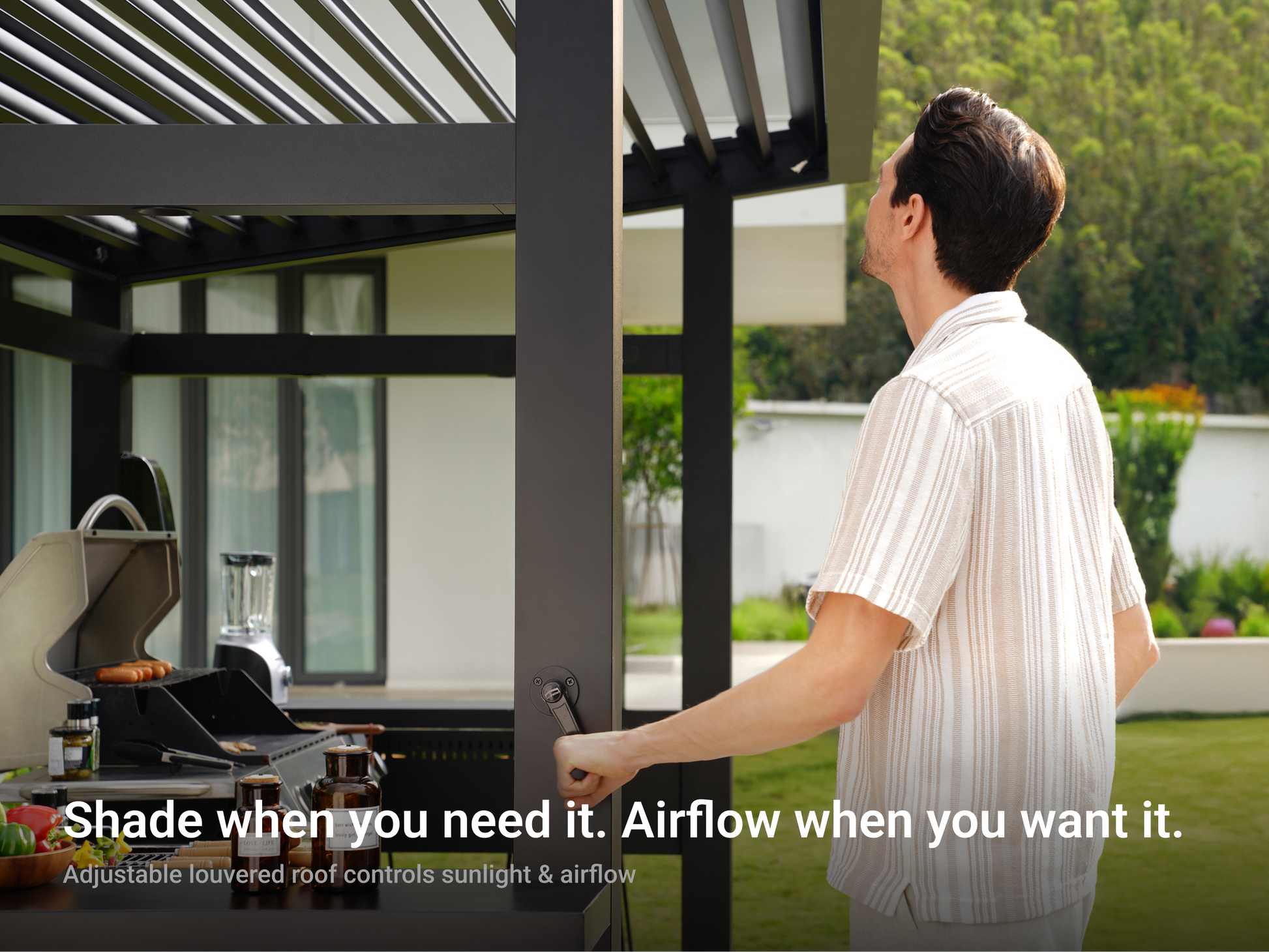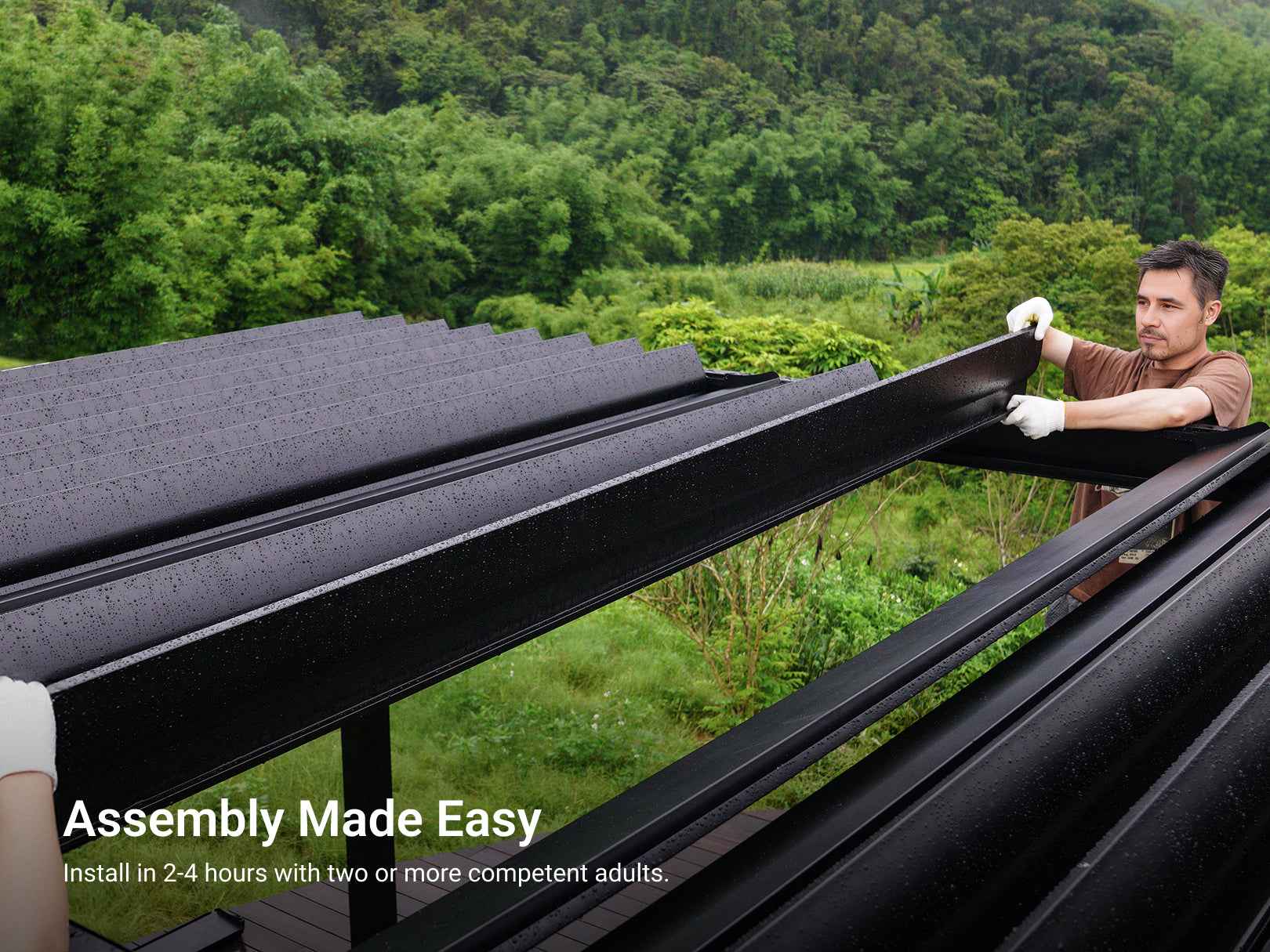The Growing Demand for Weather-Proof Outdoor Dining Spaces
Outdoor dining has evolved from occasional summer luxury to a lifestyle expectation. Homeowners increasingly view patios and decks as essential extensions of their living areas, investing in premium furniture, outdoor kitchens, and sophisticated décor. This shift intensified during recent years as people sought safe gathering spaces, discovering the psychological benefits of dining surrounded by nature. Yet traditional outdoor setups remain vulnerable to weather's whims. A sudden afternoon thunderstorm can drench expensive cushions and force everyone inside mid-meal. Intense UV rays make midday dining unbearable, causing discomfort and health concerns. Unexpected wind gusts send napkins flying and chill guests despite warm temperatures. These disruptions create frustration and limit how often homeowners actually use spaces they've carefully designed. The consequence extends beyond inconvenience—it represents wasted investment in underutilized square footage. Many beautiful outdoor dining areas sit empty for months, their potential unrealized because weather conditions make them inhospitable. Motorized pergolas address this fundamental limitation by transforming static structures into dynamic, responsive environments. Rather than accepting weather as an unchangeable constraint, these systems position outdoor dining spaces as reliable, comfortable venues regardless of forecast. This represents essential infrastructure for anyone serious about maximizing their outdoor pergola investment and creating truly functional alfresco dining experiences throughout the year.

Unlocking Louvered Pergola Benefits for Ultimate Control
Louvered pergolas operate through adjustable roof slats that rotate to precise angles, giving you complete command over your outdoor environment. These horizontal blades pivot from fully closed to completely open positions, allowing you to calibrate exactly how much sunlight, airflow, and protection your dining space receives at any moment. When positioned at optimal angles, the louvers create effective rain deflection while maintaining air circulation—preventing the stuffiness that plagues solid-roof structures. This ventilation control distinguishes louvered systems from fixed canopies or traditional pergolas with fabric covers, which trap heat and offer no adjustment flexibility. During pleasant weather, open the louvers completely to enjoy unobstructed sky views and natural breezes. As temperatures climb, angle them to block direct sun while permitting indirect light and airflow. When rain threatens, close them entirely to create a watertight seal overhead. This climate customization transforms dining comfort dramatically—guests remain cool without artificial cooling, protected without feeling enclosed, and connected to the outdoors while shielded from its harshest elements.

Key Structural Advantages Over Traditional Designs
Modern louvered pergolas incorporate engineered drainage channels within the support beams, directing rainwater away from your dining area rather than letting it drip through gaps like conventional designs. Premium systems utilize powder-coated aluminum or advanced wood composite materials that resist warping, fading, and corrosion far better than traditional timber structures requiring constant maintenance. These materials withstand significant wind loads through reinforced framework engineering—many rated for winds exceeding 100 mph when louvers are closed. The architectural flexibility proves equally valuable, with modular designs adapting to L-shaped patios, narrow side yards, or expansive decks. Freestanding models require no home attachment, while wall-mounted versions extend living spaces seamlessly. This structural versatility means nearly any outdoor dining layout can accommodate a properly designed louvered system, regardless of existing architecture or spatial constraints.
Motorized Pergola: The Smart Upgrade for Modern Homes
The motorized pergola represents a fundamental convenience revolution compared to manual systems. With a simple remote button press or smartphone tap, louvers adjust smoothly within 30-60 seconds—no climbing ladders, turning cranks, or exerting physical effort. This effortless operation encourages frequent adjustments throughout the day as conditions change, maximizing comfort rather than settling for "good enough" positioning because manual adjustment feels too burdensome. Integration with smart home ecosystems elevates functionality further. Voice commands through Alexa or Google Assistant let you close louvers without interrupting dinner conversation when unexpected drizzle begins. Programmable automation schedules louvers to close during typical afternoon rain hours or open at sunset for stargazing desserts. Weather-responsive systems detect rain or excessive wind and adjust automatically, protecting your space even when you're away. For households hosting frequent gatherings, this time savings compounds significantly—what once required five minutes of manual cranking multiple times daily becomes instantaneous. The labor reduction proves especially valuable for elderly homeowners or those with mobility limitations, transforming pergola adjustment from physically demanding tasks into accessible controls operable by anyone regardless of strength or dexterity.

Motorized vs Manual: Convenience Comparison
Operation speed differences are dramatic: motorized systems complete full louver rotation in under one minute, while manual cranking typically requires 3-5 minutes of continuous effort. This speed gap matters during sudden weather changes when seconds count. Accessibility considerations make motorized systems essential for many users—elderly individuals avoiding shoulder strain, wheelchair users unable to reach crank mechanisms, and families with young children who cannot safely operate manual systems. Modern motorized units incorporate obstruction sensors that halt operation if objects block louver movement, preventing damage and injuries that manual systems risk when users crank forcefully without clear sightlines. Maintenance requirements differ substantially over time. Manual mechanisms involve gears, chains, and cranks requiring periodic lubrication and adjustment as components wear, while motorized systems use sealed motors needing minimal intervention beyond occasional cleaning. Cost-benefit analysis reveals that while motorized options carry higher upfront investment—typically $2,000-4,000 more than manual equivalents—the convenience premium pays dividends through increased usage frequency, reduced physical burden, and enhanced property value that appeals strongly to tech-savvy buyers prioritizing smart home features.
Optimizing Outdoor Dining Experiences Through Adaptive Design
Adaptive pergola systems respond dynamically to changing conditions throughout your dining events. Integrated rain sensors detect moisture within seconds, automatically closing louvers before guests notice the first drops—eliminating frantic scrambles to save tablecloths and electronics. Sun-tracking algorithms adjust louver angles throughout the day, maintaining optimal shade positioning as the sun moves across the sky without requiring manual intervention. This real-time responsiveness transforms all-day gatherings from logistical challenges into seamless experiences. Consider a weekend brunch beginning at 10 AM under fully open louvers for morning sunshine, automatically adjusting to 45-degree angles by noon to block harsh overhead rays while preserving natural light, then opening again for golden-hour ambiance during evening cocktails. The system adapts invisibly, letting hosts focus entirely on guests rather than environmental management. Strategic integration with complementary features amplifies dining ambiance dramatically. Recessed LED strips within louver channels provide adjustable overhead lighting—dim for romantic dinners, bright for family game nights. Infrared heaters mounted to support beams extend comfortable dining into cooler months without the smoke and maintenance of fire pits. Weather-resistant Bluetooth speakers built into pergola posts deliver surround-sound music without cluttering your dining table with portable devices. These integrated systems create cohesive outdoor rooms rivaling interior spaces in comfort and functionality, encouraging homeowners to migrate dining experiences outside far more frequently than traditional setups permit. When paired with quality outdoor furniture from providers like LuxPatio, these pergola-covered spaces become fully realized extensions of your home's interior design aesthetic.
Seasonal Dining Scenario Solutions
Summer demands maximum UV protection combined with airflow—position louvers at 60-70 degree angles to block direct sun while creating chimney-effect ventilation that draws hot air upward and pulls cooler ground-level breezes through your dining area. During monsoon seasons, fully closed louvers with proper gutter systems create watertight barriers; premium models feature interlocking blade edges with rubber seals achieving waterproof ratings comparable to solid roofs. Autumn's unpredictable wind gusts require partially closed configurations that deflect horizontal wind while preventing uplift forces—typically 30-40 degree angles provide optimal wind barriers without sacrificing light. When temperatures drop, close louvers completely and activate radiant heaters to trap warmth, transforming your pergola into a semi-enclosed space retaining heat 15-20 degrees warmer than open air. Winter snow management depends on load ratings—quality motorized systems withstand substantial snow accumulation when closed, but periodic opening to dump heavy loads prevents structural stress. For regions with frequent freeze-thaw cycles, heated motor housings prevent ice formation that could jam mechanisms, ensuring year-round operability regardless of temperature extremes.
Comprehensive Weather Protection Strategies
Achieving complete weather protection requires layered defense systems beyond louvers alone. Premium motorized pergolas incorporate interlocking blade technology with EPDM rubber gaskets along each slat edge, creating watertight seals when fully closed that prevent water infiltration even during driving rainstorms. For enhanced protection against horizontal elements, retractable screen systems mount to pergola perimeters—zippered tracks guide weather-resistant fabric panels that block wind-driven rain, pollen, and insects while maintaining visibility and airflow. These screens deploy independently from louvers, allowing customized protection configurations: closed louvers with open screens for rain protection and views, or closed screens with angled louvers for wind barriers with overhead light. Material science advances contribute significantly to longevity and performance. Marine-grade powder coating on aluminum frames resists saltwater corrosion in coastal environments, while UV-stabilized finishes prevent color fading through decades of sun exposure. Stainless steel hardware eliminates rust concerns in fasteners and hinges. Complementary infrastructure maximizes protection effectiveness—integrated gutter systems with 4-6 inch capacity channels handle heavy downpours, directing runoff through concealed downspouts away from dining areas. Removable side panels in polycarbonate or tempered glass transform pergolas into three-season rooms, blocking cold winds while permitting natural light. French drainage systems installed around pergola perimeters prevent water pooling during extended rain events, maintaining dry flooring underneath. This comprehensive approach creates outdoor dining spaces genuinely protected against weather extremes rather than merely shaded structures.
Transform Your Outdoor Dining with Motorized Pergolas
Motorized pergolas fundamentally transform outdoor dining from weather-dependent activities into reliable, comfortable experiences you can enjoy throughout the year. By providing precise environmental control through adjustable louvers, these systems eliminate the frustrations of unpredictable rain, harsh sunlight, and disruptive winds that traditionally limited your patio's usability. The smart convenience of remote and automated controls removes physical barriers, making climate adjustments effortless for everyone in your household regardless of age or mobility. Beyond mere weather protection, these adaptive structures create sophisticated outdoor rooms that rival interior spaces in comfort and ambiance, encouraging you to migrate dining experiences outside far more frequently. For discerning outdoor enthusiasts serious about maximizing their investment in alfresco living, motorized pergolas represent essential infrastructure rather than optional luxury—they're the difference between occasionally using your patio when conditions align perfectly and confidently planning outdoor gatherings knowing your space adapts to whatever weather arrives. To identify the optimal system for your specific climate, architectural style, and entertainment needs, consult with specialized pergola designers who can assess your space and recommend configurations delivering maximum year-round comfort and functionality.